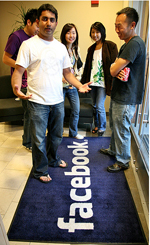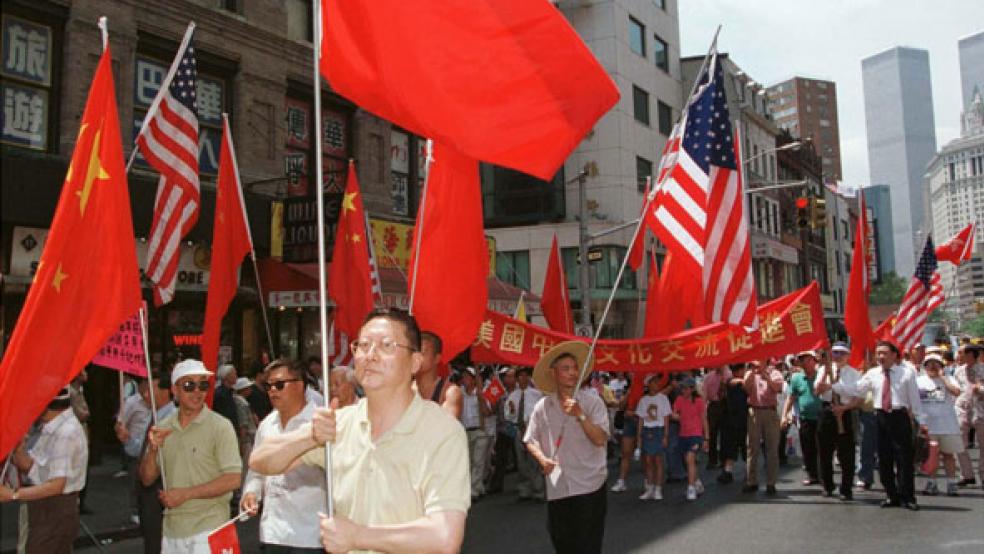After President Obama relaxed immigration rules to give young illegal immigrants a temporary reprieve from the threat of deportation, it quickly became a political football. Would Romney try to kill the initiative? Would Marco Rubio be Romney’s VP choice in an attempt to secure the Latino vote?

No matter how much Mitt Romney tries to sway Latinos, he’ll be hitting a brick wall. A Latino Decisions poll taken shortly after Obama’s announcement shows that Romney doesn’t have a prayer with this voter group. Romney’s statements on self-deportation and his support for the Arizona law that was struck down by the courts have made 59 percent of Hispanics “less enthusiastic” about him as president.
Add to this a Bloomberg survey of voters that showed overwhelming support for Obama’s new policy --64 percent to 30 percent -- and it’s clear that Romney will have a hard time winning with Latinos. So maybe he should throw in the towel and go after a different prize—the Asian American voter.

A new report from Pew Research Center shows that Asian immigration has overtaken that of Hispanics in the last decade – and Asians top Hispanics in both income and education. The Asian profile might suggest a bent toward conservatism, but at least 50 percent are likely to vote Democratic. If Romney can convince this demographic that his policies will help them fulfill their American dreams, he can neutralize, at least partially, the effect of a big Hispanic win for Obama.
Hispanics of voting age outnumber Asians by about almost 3 to 1 – 31.7 million to 13.3 million. However, when you discount illegal immigrants among all groups the numbers change again – 23.3 million to 12.5 million. Getting more Hispanics to vote will be a huge challenge. ABC News reported yesterday that the number of registered Latino voters has dropped substantially and that the National Association of Latino Elected and Appointed Officials is projecting a turnout of around 10.5 million.
That might be a stretch. In 2008, 9.7 million Hispanics voted – before the Great Recession forced many back to their native lands as jobs in construction and other industries dried up – and Obama won 67 percent of that vote. That same year, 3.4 million Asians voted, and once again, Obama grabbed more than two-thirds of that vote against McCain. In 2010, there were 50.5 million Latinos in the U.S. according to the Census but just 6.6 million voted. In 2008, 48 percent of Asians turned out to vote — up 4 percentage points from 2004.
If the same numbers turn out this year, Romney’s best shot at leveling part of the ethnic playing field is capturing 37 percent of the Hispanic vote and a whopping 65 percent of the Asian vote. That would close the gap somewhat by 1.5 million votes.
There are four key states where Asian American voters could swing the outcome according to MSNBC.
• North Carolina – 2.3 percent
• Florida – 3 percent
• Nevada – 8 percent
• Virginia – 6 percent
Capturing those votes may be another big hurdle for Romney in the wake of Obama's new immigration policy. The number of illegal Chinese immigrants coming through Arizona – yes, Arizona -- increased 10-fold in 2009 according to The New York Times. For them, and thousands like them, self-deportation is a deal breaker.
Ann Lee, an adjunct professor of economics at New York University and author of What the U.S. Can Learn from China, says, “It is too bad that Asian Americans have traditionally been overlooked because they often were not easily organized and politically involved. Other groups have been able to coalesce that way.” One reason, she says, is that Asian Americans are from very diverse backgrounds and might not find that much in common. “It’s difficult to get them to vote in blocks,” she said.
But that might be changing. What ties Asians together is their shared view of American opportunity. They work hard, believe in family and marriage, and raise their children to be high achievers. Lee says, “High achievement is a better target for the Republican party. They tend to believe in hard work and self sufficiency, which resonates more with the Republicans than Democrats.”

Still, like Hispanics, Asians suffer from discrimination. Unlike Hispanics, they also suffer from reverse discrimination, especially when it comes to admission to top universities. The U.S. Education Department is investigating bias complaints that pit Asians, who score high on achievement tests and college entrance exams, against blacks and Hispanics.
A report in Bloomberg says, “Like Jews in the first half of the 20th century, who faced quotas at Harvard, Princeton, and other Ivy League schools, Asian-Americans are over-represented at top universities relative to their population, yet must meet a higher standard than other applicants based on measures such as test scores and high school grades, according to several academic studies.”
None of this has held Asian Americans back. Take a stroll through Facebook’s campus (or any other Silicon Valley enterprise), and you’ll find a high representation of Asian Americans in every area of a company. Ann Lee says that today, being Asian is its own identity regardless of the diversity of backgrounds. “Just as the economies in the Asia Pacific learn to work together, Asian Americans are learning to ignore differences and concentrate on common goals,” she says.

Those common goals are beginning to break down political barriers. Two conservative governors -- Bobby Jindal (Indian) and Nikki Haley (Sikh) -- and Gary Locke, a Chinese American democrat appointed by President Obama as Ambassador to China, are among the new Asian politicians.
If Romney is able to bring Asians into his tent, he could give himself a winning advantage. Lee says, “Asian Americans are amongst the highest legal immigration in the U.S. They are very visible in the sciences and technology—you wouldn’t want to alienate people who are driving the future of the country.”





